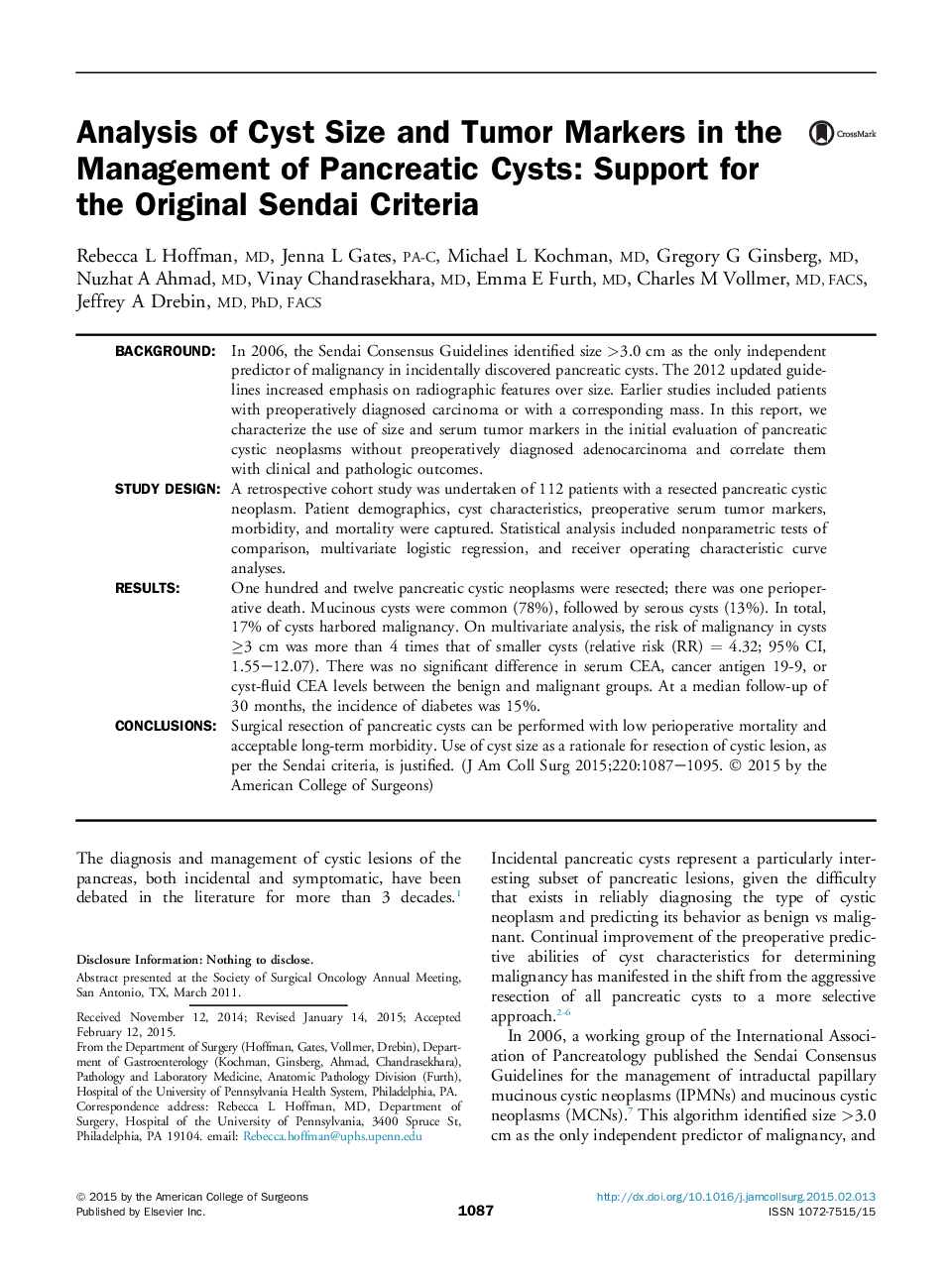| کد مقاله | کد نشریه | سال انتشار | مقاله انگلیسی | نسخه تمام متن |
|---|---|---|---|---|
| 4291137 | 1612219 | 2015 | 9 صفحه PDF | دانلود رایگان |
BackgroundIn 2006, the Sendai Consensus Guidelines identified size >3.0 cm as the only independent predictor of malignancy in incidentally discovered pancreatic cysts. The 2012 updated guidelines increased emphasis on radiographic features over size. Earlier studies included patients with preoperatively diagnosed carcinoma or with a corresponding mass. In this report, we characterize the use of size and serum tumor markers in the initial evaluation of pancreatic cystic neoplasms without preoperatively diagnosed adenocarcinoma and correlate them with clinical and pathologic outcomes.Study DesignA retrospective cohort study was undertaken of 112 patients with a resected pancreatic cystic neoplasm. Patient demographics, cyst characteristics, preoperative serum tumor markers, morbidity, and mortality were captured. Statistical analysis included nonparametric tests of comparison, multivariate logistic regression, and receiver operating characteristic curve analyses.ResultsOne hundred and twelve pancreatic cystic neoplasms were resected; there was one perioperative death. Mucinous cysts were common (78%), followed by serous cysts (13%). In total, 17% of cysts harbored malignancy. On multivariate analysis, the risk of malignancy in cysts ≥3 cm was more than 4 times that of smaller cysts (relative risk (RR) = 4.32; 95% CI, 1.55–12.07). There was no significant difference in serum CEA, cancer antigen 19-9, or cyst-fluid CEA levels between the benign and malignant groups. At a median follow-up of 30 months, the incidence of diabetes was 15%.ConclusionsSurgical resection of pancreatic cysts can be performed with low perioperative mortality and acceptable long-term morbidity. Use of cyst size as a rationale for resection of cystic lesion, as per the Sendai criteria, is justified.
Journal: Journal of the American College of Surgeons - Volume 220, Issue 6, June 2015, Pages 1087–1095
